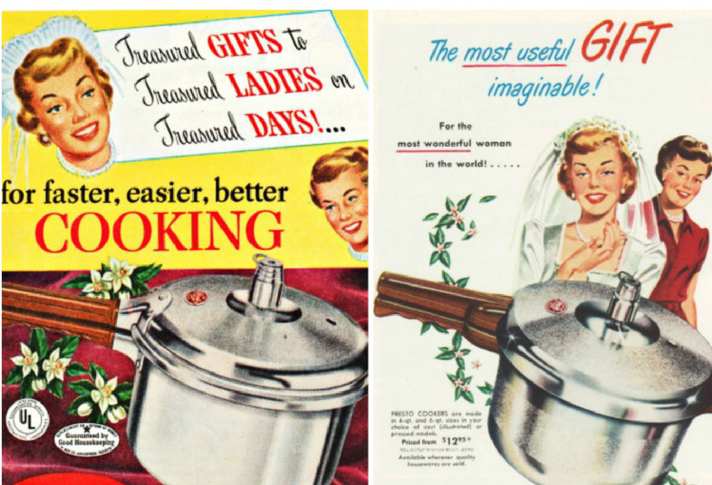By Vicki Matranga, Design Programs Coordinator
Today’s busy families operate under a lot of pressure to keep after-school activities, homework and chores on schedule. Moms may feel they are battling clock and calendar as they rush to get dinner on the table, while worrying that food-on-the-go or a microwaved meal-in-a-bag can’t provide the nutrition or satisfaction of a home-cooked meal. Amidst this battle, consumers are rediscovering pressure cooking, a method of food preparation invented in the late 1600s that was used frequently throughout the 19th century for canning and for feeding armies of hungry soldiers.
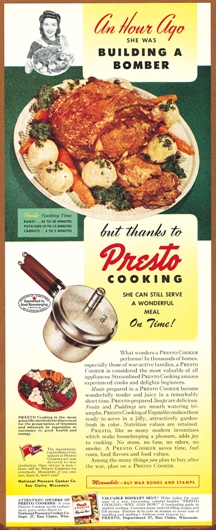 Pressure cooking is a method of cooking with steam in an airtight pot. The boiling point of water increases as the pressure increases, and the pressure built up inside the cooker allows the liquid in the pot to rise to a higher temperature before boiling. Infused with flavor, food cooks three times faster in this vessel, which uses valves to control the release of the steam. You can learn more about how pressure cookers work here.
Pressure cooking is a method of cooking with steam in an airtight pot. The boiling point of water increases as the pressure increases, and the pressure built up inside the cooker allows the liquid in the pot to rise to a higher temperature before boiling. Infused with flavor, food cooks three times faster in this vessel, which uses valves to control the release of the steam. You can learn more about how pressure cookers work here.
In 1925, Northwestern Steel and Iron Works, a Wisconsin manufacturer of commercial canning equipment founded in 1905, redirected its production to the consumer market and changed its name to the National Pressure Cooker Company to more closely identify with its most popular product, a deep, round pot with a clamp-on lid. Functional, yet heavy, hard to handle for women and often dangerous, such pots were typical of pressure cookers made by many manufacturers in the 1920s. The company demonstrated its devices at state fairs and at the major expositions of the mid-1930s, including the 1933 Chicago Century of Progress. In 1939 at the New York World’s Fair, the company premiered its “Presto” saucepan-style pressure cooker with a rotating cover and simple gasket seal. Soon Presto® became the name commonly used for the product. Pressure cookers saved time, vitamins, flavors and fuel. American women, who were working in factories during World War II, relied on them to prepare hearty meals for their families.
Now named National Presto Industries, Inc., the company celebrated its 100th anniversary of innovation in 2005. The company offers a wide range of pressure cookers and many other convenient food preparation tools and appliances. Its 6-Quart Stainless Steel model is ergonomic, economical and environmentally conscious, saving time, energy and money while cooking foods fast and without added fats. Made with a layer of aluminum sandwiched between two layers of stainless steel for quick, even heating, it offers multiple safety features. In partnership with The Breast Cancer Research Foundation, $5 of every unit sold is donated to motivate consumers to “pressure cook for a cure.” Learn more about the company’s many products at www.gopresto.com.
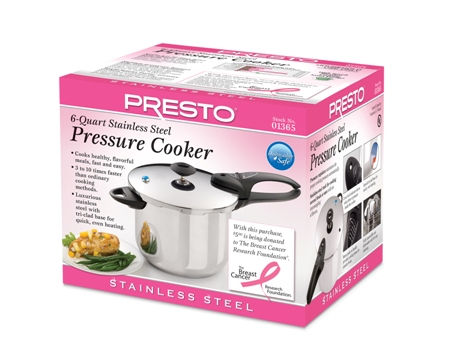
Fissler has been known for precision production of quality cooking equipment in Germany since 1845. Pressure cooking has long been common in European kitchens and Fissler contributed important innovations in the field with the 1953 multi-setting control valve and the pressure skillet in 1969. Its Blue Point series, sold in the U.S. and Canada, combines attractive modern design with the latest technology.
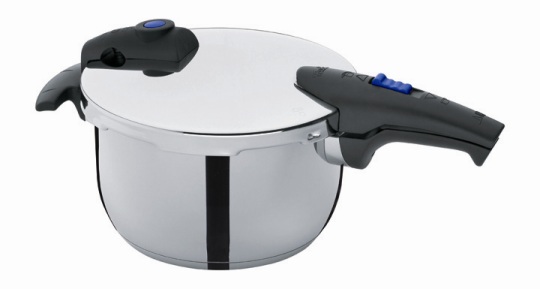
Featured in the November issue of Food and Wine magazine and demonstrated in a recent cooking class at City Kitchens of Seattle, the Blue Point pressure cookers allow cooks to confidently and easily prepare all types of foods for nutritious meals. Learn more at www.fisslerusa.com.
Electronic pressure cookers bring added convenience to cooks who want to plan ahead.
The Elite Platinum Maxi-Matic 8-Quart appliance includes a 24-hour present delay timer with user programmable cooking capability. It features 13 preset cooking menus, silent operation and a hinged lid. Its large capacity makes easy work of family-size meals while taking the guesswork out of preparation. See Maxi-Matic’s pressure cookers models and other products at their website.
Blast from the Past—A Look Back
Pressure cookers sure have evolved since the 1930s! Today’s sleek stovetop and electronic pressure cookers leap beyond this 1930s German model, which was elegant and technologically advanced for its time.
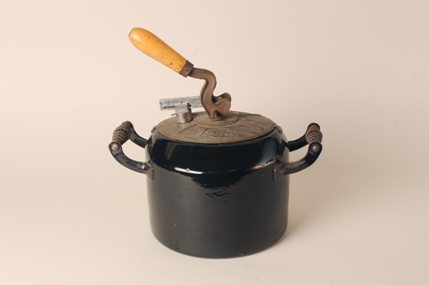
You can learn more about this item on the Culinary Curiosity website, complete with more photos and video!
Missed a post in our Housewares History series? Click the link here and get educated on how we got to where we are today!
